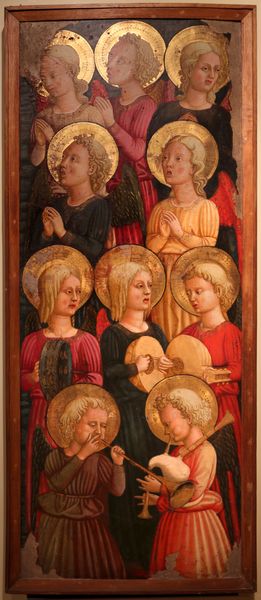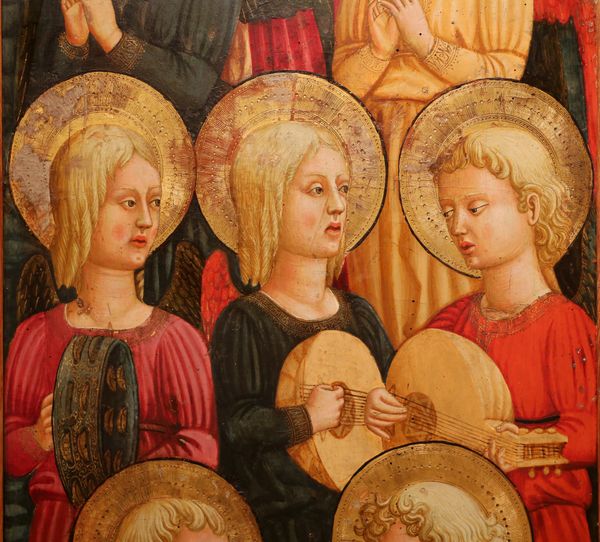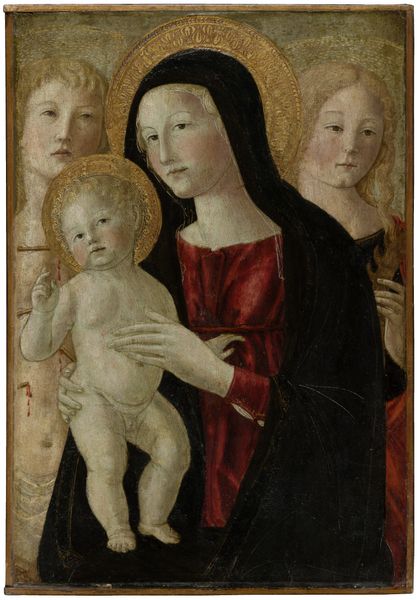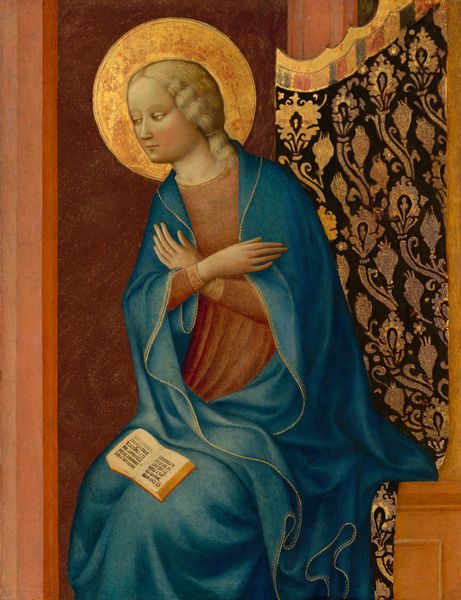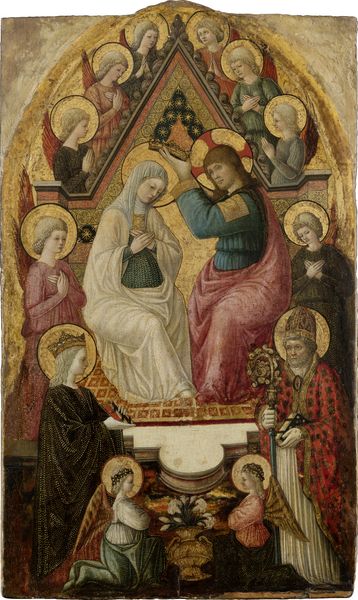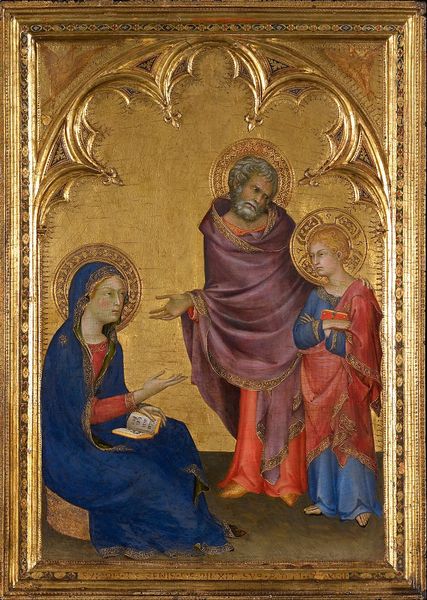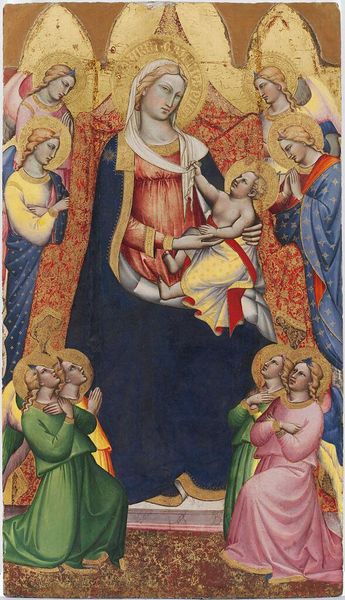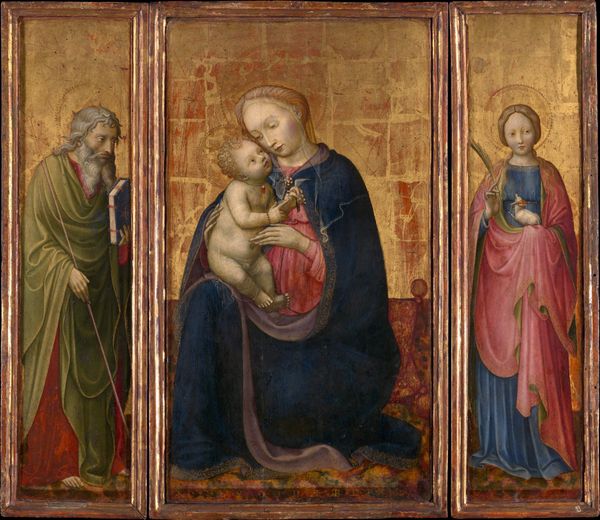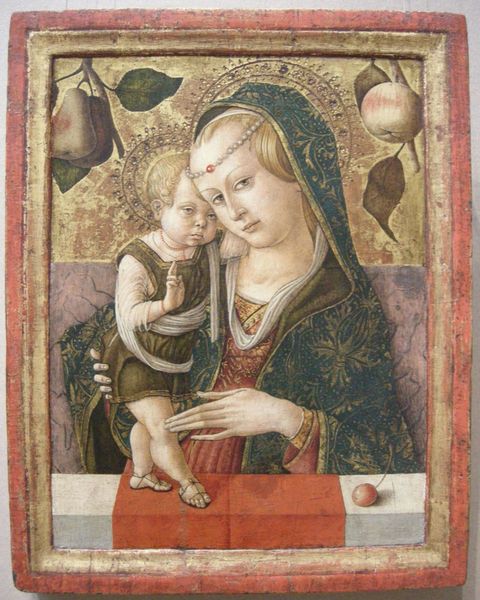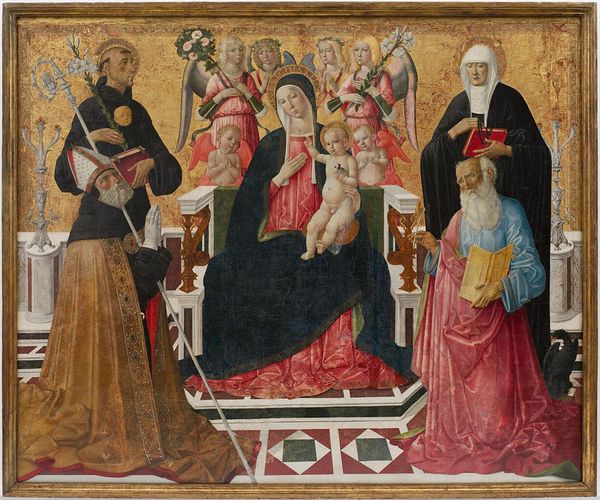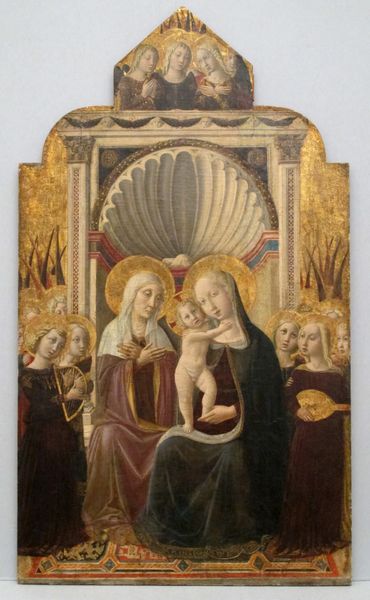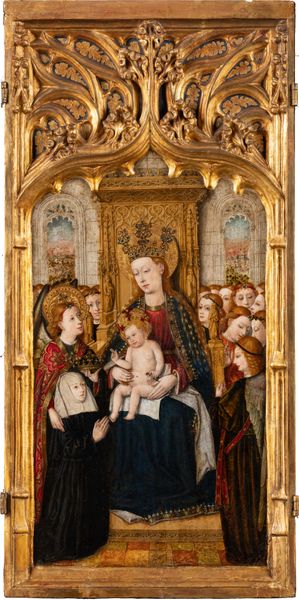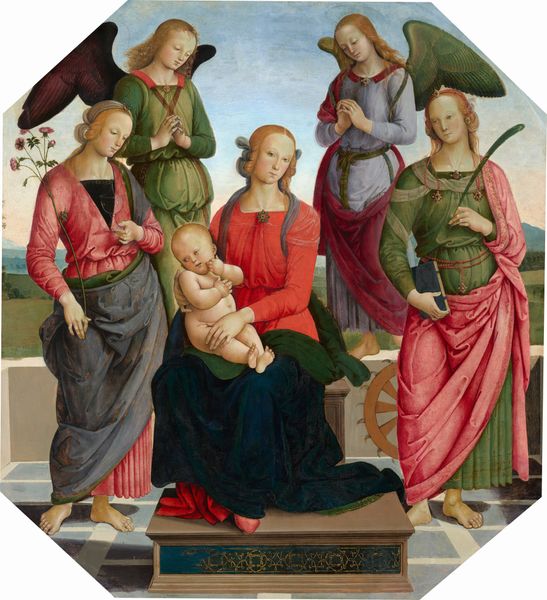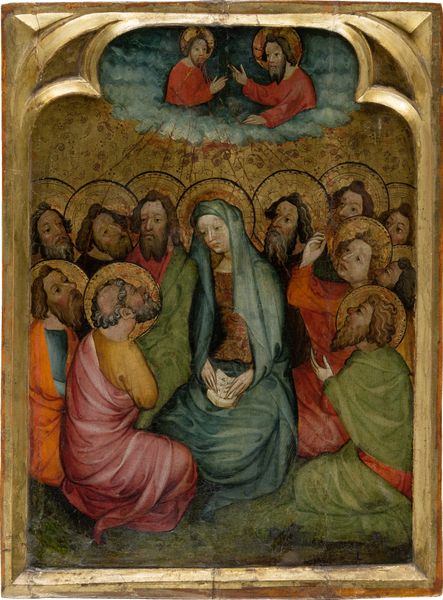
tempera, painting
#
allegory
#
tempera
#
painting
#
figuration
#
oil painting
#
tile art
#
genre-painting
#
academic-art
#
italian-renaissance
#
miniature
#
angel
Copyright: Public domain
Lo Scheggia painted this altarpiece panel of a choir of music-making angels sometime in the mid-15th century. These figures in layered rows, some singing, others playing instruments, would have been readily legible to a Renaissance audience. The imagery derives from Medieval prototypes, yet the style is thoroughly of its time and place: Florence, at the height of its artistic influence. We see the characteristically Florentine delight in precise observation, as well as a pervasive classicism. Note the angels' resemblance to earthly children and the naturalistic rendering of their drapery. These qualities helped forge a new relationship between the earthly and the divine. During this period, Italian city-states sought to legitimize their power through art patronage. Religious imagery like this was a crucial means of displaying wealth and status, and a way of cementing connections to the Church. By studying the material conditions surrounding the production of such art, we can better understand the cultural values of Renaissance Florence. We begin to see how these values have echoed across centuries, shaping art's place in the world today.
Comments
No comments
Be the first to comment and join the conversation on the ultimate creative platform.
